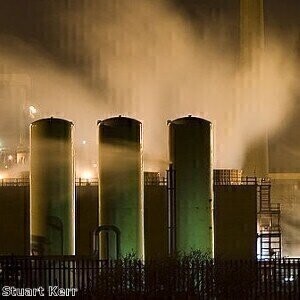Analytical Instrumentation
Are the Oil and Gas Sectors Failing to Harness their Data Systems?
Feb 13 2023
It may be the case that the oil and gas sectors are missing out on hundreds of millions of dollars per asset by failing to fully utilize the potential of in-well fiber optic technology. The data produced by this technology, when properly managed and translated into actionable insights, can yield significant production benefits.
Oil and gas companies have been installing fiber optic cables in hydrocarbon wells for three decades. Industry installed the cables in hydrocarbon wells as a means of distributed strain sensing, with the aim of improving production and efficiency. In fiber optic sensing using Rayleigh scatter, a laser pulse is sent down an optical fiber. The scattering within the fiber causes it to act like a distributed interferometer, with a gauge length that is roughly equal to the pulse's length. The reflected light's intensity is measured as a function of time after the laser pulse transmission. This method is known as Coherent Rayleigh Optical Time Domain Reflectometry (COTDR). After the pulse has traveled the entire length of the fiber and back, another laser pulse can be sent. Differences in the reflected intensity from successive pulses from the same part of the fiber result from changes in that section's optical path length. This system is highly sensitive to both temperature variations and strain in the fiber, and measurements can be taken nearly simultaneously from all sections of the fiber. By using fiber optic cables as downhole sensors, insights can be generated to solve key production challenges in hydrocarbon wells, such as inflow and outflow profiling, sand identification, and well integrity analysis. With high-resolution, real-time views of well performance, companies can make data-driven decisions that drive production and improve efficiency
However, despite the potential benefits of these networks, they have remained substantially underutilized – for one simple reason. As this technology developed, the quantity of data produced began to grow exponentially. Companies remain intimidated by the large volume of data produced by this technology, lacking the capacity and skillset required to turn this data into valuable operational insights. As a result, operators continue to make multimillion-dollar decisions based on infrequent, limited data. But there are advanced data solutions to overcome the challenges of data volume and insight extraction. With hybrid analytics, this data can provide real-time visibility into production changes, enabling operators to act on downhole insights in real-time.
As the oil and gas sector continues to face challenges such as fluctuating oil prices, pressure to reduce environmental impact, and increased focus on efficiency and profitability, it is crucial that companies make the most of the data opportunity presented by in-well fiber optic technology. By choosing to invest in real-time insights, they can tackle the challenges of sand detection, well integrity, and flow profiling, ensuring their operations are as sustainable and profitable as possible.
Digital Edition
PIN 25.3 June/July
June 2024
Analytical Instrumentation - Recent Advances In Various Bench Scale Accelerated Oxidative Testing Methods For Fuels - Petrochemical Industry: Anton Paar Solutions Streamline Processes, Reduce H...
View all digital editions
Events
Jul 30 2024 Jakarta, Indonesia
Jul 30 2024 Jakarta, Indonesia
China Energy Summit & Exhibition
Jul 31 2024 Beijing, China
Jul 31 2024 Chengdu, China
Aug 05 2024 Moon Township, PA, USA


















